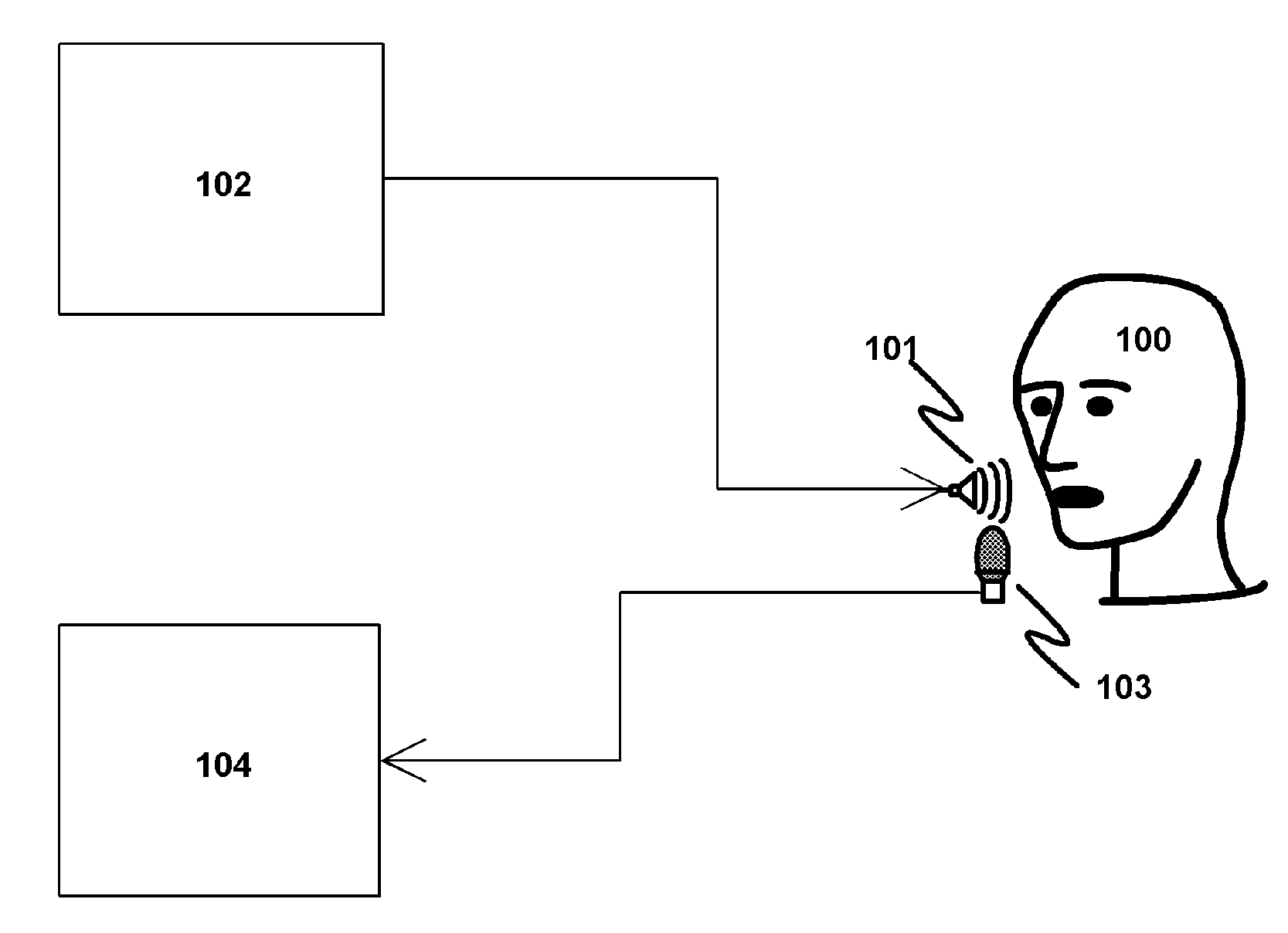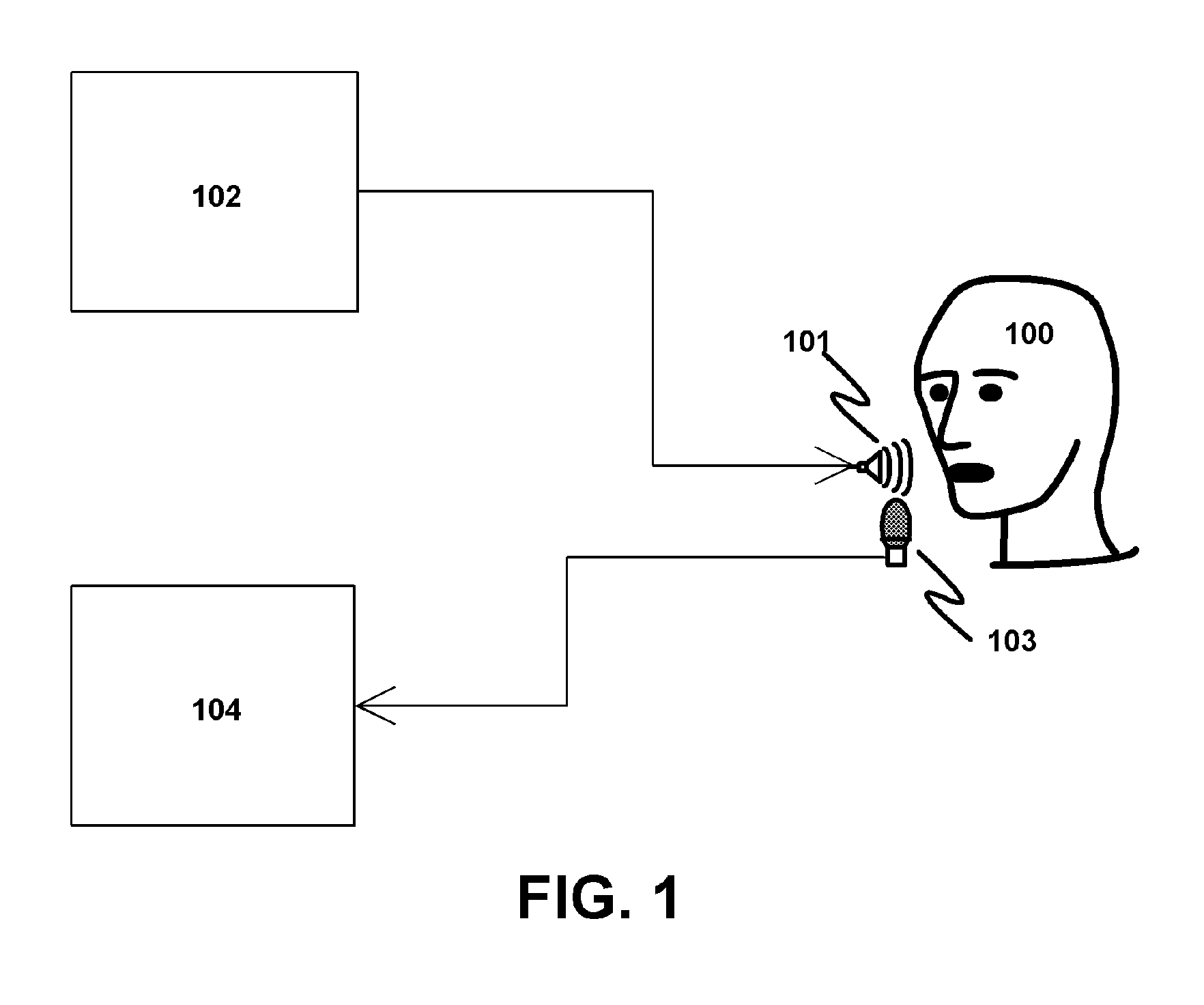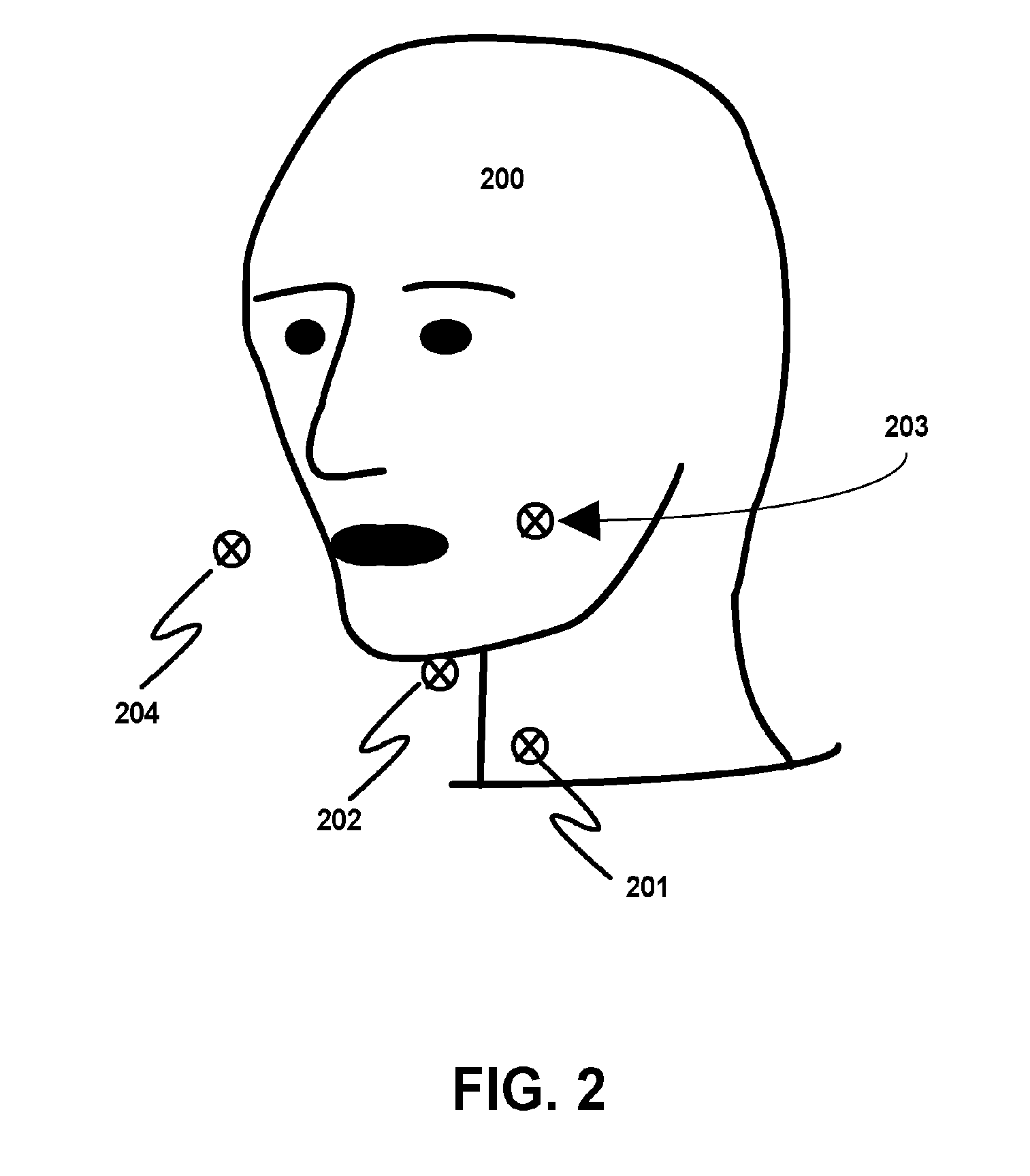Apparatus and Method for Detecting Speech Using Acoustic Signals Outside the Audible Frequency Range
- Summary
- Abstract
- Description
- Claims
- Application Information
AI Technical Summary
Benefits of technology
Problems solved by technology
Method used
Image
Examples
Embodiment Construction
[0016]In one variation of the embodiment, the present invention is an apparatus and method for detecting speech comprising means for generating an acoustic signal outside the audible frequency range, whether ultrasound or infrasound, in any combination of frequencies, applied continuously or varying in strength and / or frequency over time, and means for capturing the acoustic signal after it has interacted with the vocal tract of the person whose speech is being detected, wherein the acoustic signal captured after it has interacted with the vocal tract is then processed to detect changes to the acoustic signal due to its interaction with the vocal tract, such changes being advantageously substantially distinct for each action of the vocal tract during speech. The means for generating the acoustic signal may be one or more acoustic transducers placed in proximity to the vocal tract of the person whose speech is being detected. The means for capturing the acoustic signal may be one or ...
PUM
 Login to View More
Login to View More Abstract
Description
Claims
Application Information
 Login to View More
Login to View More - R&D
- Intellectual Property
- Life Sciences
- Materials
- Tech Scout
- Unparalleled Data Quality
- Higher Quality Content
- 60% Fewer Hallucinations
Browse by: Latest US Patents, China's latest patents, Technical Efficacy Thesaurus, Application Domain, Technology Topic, Popular Technical Reports.
© 2025 PatSnap. All rights reserved.Legal|Privacy policy|Modern Slavery Act Transparency Statement|Sitemap|About US| Contact US: help@patsnap.com



